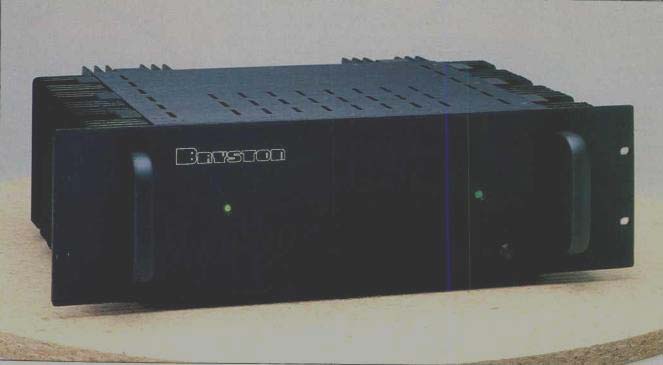
Manufacturer's Specifications
Power Output: 250 watts rms per channel continuous, 8 ohms, 20 Hz to 20 kHz; 400 watts rms per channel continuous, 4 ohms; 800 watts continuous into 8 ohms in bridged mode.
Rated THD: Less than 0.01% maximum, 250 watts rated power per channel, 20 Hz to 20 kHz.
Frequency Response: 1 Hz to 100 kHz. +0.-3 dB for 1 watt output.
S/N Ratio: Hum and noise, 100 dB below rated output, 90 dB IHF.
IM Distortion: Less than 0.01%, from 10 mW to rated output, for any combination of frequencies from 20 Hz to 20 kHz.
Damping Factor: Greater than 500 at 20 Hz, referred to 8 ohms.
Input Impedance: 50 kilohms unbalanced.
Input Sensitivity: 1.40 V for 250 watts per channel into 8 ohms.
Dimensions: Chassis, 19 in. W x 5 1/4 in. H x 13 1/2 in. D (48.2 cm x 13.3 cm x 34.3 cm), including connectors; front panel, 16 3/16 in. W x 7 1/8 in. H (41.1 cm x 18.1 cm).
Weight: 50 lbs. (22.7 kg).
Price: $1,450.
Company Address: 57 Westmore Dr., Rexdale, Ont., Canada M9V 3Y6. (U.S. office: R.F.D. 4, Berlin, Montpelier, Vt. 05602.)
The Canadian-built Bryston 4B is a Class-AB2, solid state, stereo power amplifier which is rated at 250 watts per channel into 8-ohm loads, 400 watts per channel into 4-ohm loads, and 800 watts, bridged, into 8 ohms. Physically, the unit is rack-mountable and rather small for a Class-AB unit. It has been designed to run cool without an internal fan, which is made possible by using the entire chassis (over 1,500 square inches!) as a finned heat-sink.
The 4B was first produced in 1976. Since then, there have been only a few modifications and a small increase in price, which shows Bryston's product stability. The amplifier's reputation for ruggedness and reliability has resulted in acceptance by recording engineers and touring musicians, while its reputation for good sonics and an ability to drive difficult speaker loads has made it a hit with audiophiles. Our colleagues in the Audiophile Society (Westchester, N.Y.) favor this amplifier because it sounds good with their Plasmatronics, Jung/Randall Research-modified Dahlquist DQ-10s, and Snell Type A speakers. Recently, Bryston has designed a new output stage for the 4B, which makes it a good time to review the amplifier.
The Bryston's physical appearance adheres to the traditional military-black, "thermal monolith" design, with heat radiating fins covering the amplifier's sides and part of its back panel. The heat-sink fins are rounded and have no sharp corners or edges. The front panel features dual-color LED pilot lights, one for each channel. These remain green while the unit is powered, and flash red at clipping. The power on-off button is the only front-panel control. The rear panel contains gold-plated signal-input connectors and five-way speaker binding posts, the mono/stereo switch, a ground isolation switch, fuse-holders for two 7-ampere a.c. fuses, and the line cord. The Bryston employs an unusually heavy, non-detachable, coiled line cord.
Construction
The quality of Bryston's chassis construction appeals to us. The front panel is composed of two 1/8-inch sheets of aluminum, sized for a standard rack. Two large power transformers are located inside, near the front panel, where they are best supported in rack mounting. Chassis aluminum is either 0.048 or 0.125 inch thick, depending on structural needs. The quality of finish, machining, and assembly is up to the best instrument standards. We are delighted to see that Bryston uses threaded steel inserts and Robertson machine screws to attach removable panels instead of the more common (and less expensive) sheet-metal screws. All internal screws and fasteners are treated with locking thread-sealer for structural integrity and vibration resistance. Output transistors, and drivers are mounted in vertical groups of three to the sides and back of the chassis. Connections are picked up on the inside by sockets soldered to p.c. boards. One p.c. board in each channel spans two vertical groups and contains the amplifier drive circuitry. The other two "socket boards" are hard-wired to this drive board. Lead lengths are short, desirably, but it struck us that replacing a small circuit-board component would entail the removal of six transistors coated with thermal grease-a messy and time-consuming job. Bryston, however, points out that the amplifier's construction allows the entire board assembly for each channel to be removed for replacement (some dealers even stock these modules), or for low-cost shipping to the factory for service. Should field service be necessary, they say, the boards' plated-through holes allow components to be removed in the field from above the board; this is still hard to do, we've found, on the equipment we have tried servicing that way. In any case, these details of construction reflect Bryston's philosophy of performance first, cost second.
The 4B is a dual-mono design, with separate power sup plies for each channel, on a single chassis. Its two completely separate amplifiers are arranged symmetrically to either side of an imaginary front-to-back line. Every part is duplicated, with the exception of a single power cord and a single input/output, bridging-circuit board. Two large E-I core transformers fill the front of the chassis. Four 10,000-g filter capacitors (two per channel) stand toward the chassis rear, just in front of the back panel.
Each channel uses an open trimpot, presumably for a one-time adjustment of bias. Airborne contaminants are bound to collect on the resistance track, since the trimpot sits in the updraft between the bottom- and top-panel ventilator slots. Should the bias need future adjustment, the technician in our shop suggested that using a good contact cleaner might be necessary to get a reliable second-time setting.
Even though the unit is small compared to other conventional amps that deliver 200 watts per channel, the inside is neat, with adequate room for cooling and repairs. The driver boards and the input board use gold-plated board-edge connectors. In a wise design move, only power wiring uses the 1/4-inch push-on connectors; signal-bearing lines do not.
Soldered and "gas tight" mechanical connections, which we prefer, are used for Bryston's signal circuits. Clip-in, 8-ampere a.c. backup fuses are hidden deep in an area that is not user-serviceable, to prevent damage to the amp from audiophiles who install 30-ampere car fuses in the line sockets to "get more current" out of their amplifiers. Point to-point wiring is neatly dressed. The circuit boards them- selves are high-quality epoxy-glass, double-sided with component-designator screening. Parts are well secured and run cool; they are specified for continuous duty, with typical safety margins of 250%. Mean-time-before-failure (MTBF) ratings on the filter capacitors are several times longer than the typical ratings found in home amplifiers, Bryston claims.
Factory burn-in consists of a square-wave input signal driving the amplifier into a capacitive load, slightly under clip ping, for 100 hours, with a 3-hours-on/1-hour-off cycle. Such procedures "mature" the components inside the amplifier and uncover any marginal parts that might fail from thermal stress. After these reliability checks, the amplifier is bench-tested, and the results are listed on a sheet packed with the product. These procedures yield an amplifier likely to provide many years of maintenance-free service.
Circuit Description
The circuit of the 4B incorporates much of the design philosophy that Bryston applies in building bipolar, solid state amplifiers. For example, the double-complementary differential input circuit gives the stage great linearity by negating distortion products with subtractive cancellation.
The input stage presents the preamplifier with a high (50 kilohm), linear input impedance. This stage cross-couples the input transistors, which then can supply the bias current for d.c. equilibrium, resulting in a near-zero inherent d.c. offset voltage. This first stage exemplifies Bryston's design goals: To achieve wide-band transient accuracy and open-loop linearity.
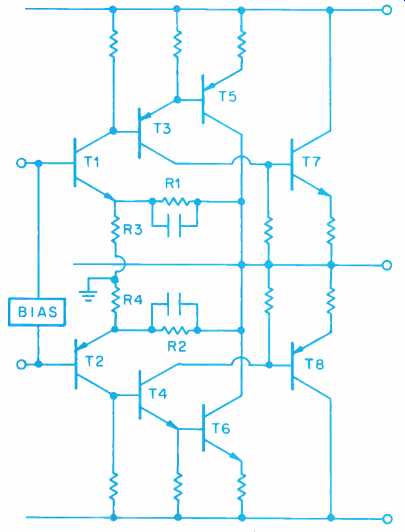
Fig. 1--Circuit diagram, output stage, Bryston 4B amplifier. Note that
both polarities of the output transistor are used on each half of the output
waveform.
Bryston recently introduced a new output-stage configuration which exhibits a number of advantages over the popular complementary bipolar, unity-gain Darlington de sign. As shown in Fig. 1, the new circuit combines emitter- and collector-output devices for both pull-up and pull-down.
It allows the base-drive current from the driver transistors (T3 and T4) to do double duty. Although each pull-up or pull-down pair of output transistors are in parallel insofar as the power-delivery current is concerned, their base terminals are connected in series. This means that the base current supplied to T7 comes from T5 (via T3) and is not merely split between the two bases as it is in the parallel connection. This configuration essentially eliminates any small asymmetry in the zero-crossing region, since both polarities of output transistor are active at all times. Every thing else being equal, driver transistors T3 and T4 will be called upon to supply exactly half the base current required in standard configurations, as well as one-fourth the junction-capacitance charging and discharging current. Gain of the output stage is set by the sub-circuit involving resistors R1 through R4. Transistors T5 and T7 comprise the "pull up" output devices (one of each sex), and T6 and T8 make up the "pull-down" pair.
There are a few easily skirted disadvantages to this new output stage. Placing the base-to-emitter voltage drops of the output transistors in series results in a 1.5-V loss in clipping output voltage; the new 4B has a slightly higher rail voltage to compensate. In addition, this design demands output devices with matched betas, so such parts are hand-selected.
Chris Russell, Bryston's main designer, reports that this new design results in a 6-dB reduction in across-the-band distortion, particularly in the upper harmonics. In addition, the output stage is more tolerant of loading than the previous design, and can drive low-impedance loads with less difficulty. Russell reports that the elimination of all zero-crossing anomalies, particularly notch distortion, means that the new 4B displays a distortion spectrum similar to that obtained with Class-A biasing. Open listening tests, always a part of Bryston's research, reveal for Russell an amp with less veiling than alternative designs.
Measurements
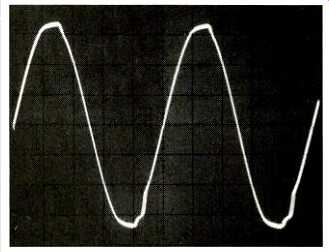
Fig. 2--Response at clipping for large-signal, 20-kHz sine wave and
8-ohm load. Slight "sticking," a source of extra distortion at
clipping, can be seen as the trace leaves the flattened peak area. Scales:
Horizontal, 10 µS/div.; vertical, 20 V/div.
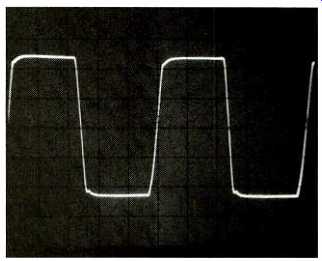
Fig. 3--Response to a 20-kHz square wave, when delivering 250 watts into
8 ohms. Scales same as in Fig. 2.
Each power supply uses an oversized transformer, a 25-ampere bridge rectifier, and two 10,000-uF electrolytic capacitors having 128 joules of energy storage per channel. Potentially noisy fans have been eliminated from the design. Rail voltages are ±80 V d.c. The power supply, while not electronically regulated, is a "stiff" design. It makes severe demands from the 167-V peak of the 60-Hz, 120-V a.c. sine wave, rather than drawing current over a more substantial percentage of the cycle. This required that we revise our usual testing technique, to maintain peak (rather than rms) line input voltage. No consumer power line is likely to per form in this manner, but then, the consumer is not likely to need (or want) continuous delivery of this level of power to speakers.
The 4B was first run for one hour at 33% of rated power, or about 83 watts per channel into 8-ohm loads with a 1-kHz test signal. The chassis top became warm, but the amplifier didn't thermally shut down.
Voltage gain was found to be 30.1 dB into an 8-ohm load. The IHF sensitivity for 1 watt into 8-ohm loads at 1 kHz was 88.4 mV.
Power output was measured from 20 Hz to 20 kHz into a variety of load conditions, as shown in Table I. At 0.1% THD, minimum continuous power output per channel was 269 watts (46.4 V) into 8 ohms and 286 watts (33.8 V) into 4 ohms. Bridged (mono) operation resulted in a minimum continuous power output of 348 watts (52.8 V).
Bryston does not give distortion or bandwidth limits for power ratings at 4 and 8 ohms in the bridged mode. We arbitrarily selected a very stringent 0.1% distortion limit, and the amplifier came close to its ratings in mid-band. Over the full audio band, and using our distortion limits, the amplifier put out less continuous power at the frequency extremes.
Allowing for a little higher distortion, the 4B would have easily met its continuous ratings. The amplifier performed very well at 8 ohms, with ample reserves to handle an occasional impedance dip down to 4 ohms.
As Table II indicates, at rated output power, the maximum total harmonic distortion plus noise (THD + N) was 0.0055% for 8-ohm loads (at 40 V). Measurements at lower levels all indicated lower distortion.
When brought to clipping level at 20 kHz, the waveform flattened on top and bottom, as expected. This happens in all amplifiers when the output transistors have pulled the load up or down to the power-supply voltages or "rails." The Bryston, like most other amplifiers, once brought to the rail voltages, tends to "stick" there for a few microseconds before jumping back to the proper waveform. This effect is shown in Fig. 2, where sticking generates an excess of distortion at clipping. The sticking lasts only a few microseconds per cycle, so its effect is greater at high frequencies, where it occurs for a greater portion of the cycle. A very high current may flow through the output devices during the sticking period. The saturated transistor (the one that pulled the load to its supply rail) does not un-saturate instantly, even though the drive to it is removed. Before it can let go, feedback may tell the opposite transistor to pull the load toward its rail voltage. Thus, for a few microseconds, both output halves can be pulling against each other. At 20 kHz or higher, this simultaneous conduction can suddenly double the current drawn from the power line as the amplifier just begins to clip.
The 4B recovers from clipping very quickly, but traces of sticking can still be seen. Bryston says that a pre-clipper circuit could have been designed into the 4B to prevent output-stage clipping, hence sticking and simultaneous conduction. It was decided, however, that the decreased maximum power output would be a greater sacrifice than the small amount of sticking. After all, if the user operates the amplifier below clipping, there is very little distortion of any kind. The twin clipping indicators on the front panel are most helpful in this regard.
The IHF signal-to-noise ratio (which is A-weighted noise referred to 1 watt output into 8 ohms) measured 87.8 dBA for the right channel and 86.6 dBA for the left channel.
Crosstalk versus frequency was measured by driving one channel and measuring the leakage into the other, with the unused input terminated by a 1-kilohm resistor. Crosstalk was found to be better than -80.5 dB from 20 Hz to 10 kHz, peaking to -73.2 dB at 20 kHz in the left channel. These figures are good, a testimony to the dual-mono design.
Figure 3 illustrates the 4B's square-wave response at rated power, 250 watts per channel into 8 ohms at 20 kHz.
The rise-time is 3µS. The slew rate measured 24 V/uS up, 27 V/uS down, asymmetrical. This improved to 30 V/uS up, 40 V/uS down when the amp was grossly overdriven by a 1-kHz square wave. IHF slew factor into 8 ohms was 3.9 (77.3 kHz). Adding a 1-µF capacitor caused the expected ringing of the output network, with a 0.2-dB increase in sine-wave output at 20 kHz, but no instability.
Table I--Maximum power output (watts) at 0.1% THD + N. Table II--THD + N (%) at rated output, 8 ohms.
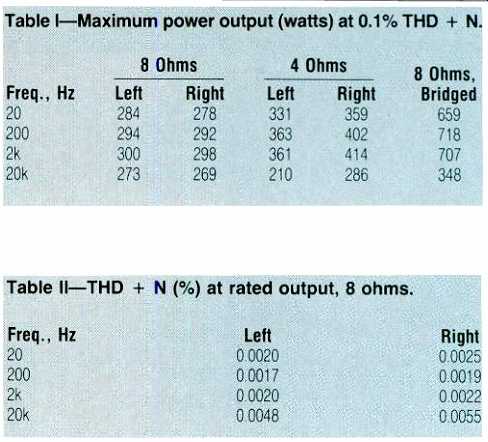
Measuring the 1-watt frequency response into 8 ohms showed the amplifier to be within ±0.1 dB from 20 Hz to 20 kHz. The high-frequency -3 dB point was at 145 kHz, and the low-frequency-3 dB point was at 0.27 Hz. Input impedance for the 4B proved to be somewhat frequency-dependent, measuring 48 kilohms at 1 kHz and 36 kilohms at 20 kHz.
The low-frequency damping factor was measured at 460 for 8 ohms, and the wide-band damping factor was measured at 27.6 for 8 ohms. Dynamic headroom measured 1.0 dB (42.3 V, 315 watts) at a pulsed clipping from a steady state level of 250 watts rated power into 8 ohms. The 4-ohm IHF headroom was 0.36 dB (47 V, 435 watts). The bridged 8-ohm IHF pulsed power output reached 0.66 dB (86.3 V, 930 watts). These figures indicate a power supply with voltage regulation that is tighter than usual.
Our standard test of peak output current utilizes a 20-mS pulse (repeated at a 0.5-S rate) driving one channel of the amplifier into a 0.1-ohm load. Under these conditions, the 4B delivered 17.1 amperes rms for the right channel and 16.3 amperes rms for the left channel, before clipping. This places it in the high-average range, among today's high powered amps, for instantaneous rms current delivery.
If more than one 4B is used in a system, they should be turned on in sequence rather than simultaneously. This is true for most high-power amplifiers that don't contain turn-on surge-limiting circuitry. The amplifier's heavy turn-on surge can trip household circuit breakers, as co-author Clark found when he turned on his home system, which then contained a Dyna 410 as well as the Bryston 4B.
Use and Listening Tests
Equipment used to evaluate the Bryston 4B included a Linn Sondek turntable with a Magnepan Unitrac 1 arm, Accuphase AC-2 moving-coil and Shure V15 Type V-MR cartridges, Philips Compact Disc players, a Mark Levinson ML-7 reference preamp, Mark Levinson ML-9 and Tandberg 3009A solid-state power amps, and Jung/Randall-modified Dahlquist DO-10A loudspeakers. Clark auditioned the Bryston in his home system and in his dedicated listening room.
The amplifier was interfaced with a number of systems, including Fried Studio IV speakers. An ABX Co. double blind comparator was used to compare the 4B to a pair of mono Tandberg 3009A amplifiers using the Fried speakers.
Hitachi oxygen-free speaker wire was used during testing by both authors.
The 4B was auditioned by co-author Greenhill on the Dahlquist speakers. First subjective impressions with this amp were of speed, tremendous transient attack, and powerful bass response. The amplifier has dynamic range to burn. Greenhill could not believe the 105-dB peaks his Dahlquists delivered re-creating the helicopter landing (in the living room!) during the opening of Pink Floyd's "The Happiest Days of Our Lives" (from The Wall). Unlike other amps, the Bryston, its clipping lights flashing, produced enough directional cues so Greenhill could track the gun ship coming in from the north, hovering over the right speaker, and finally setting down behind the left Dahlquist! We credit this ability to localize sounds precisely, even at high volume levels, to the 4B's excellent channel separation;
Greenhill's favorite big amps, the Levinson ML-3 and Krell KMA-200, are also dual-mono systems. The 4B decoded percussion and voice with uncanny accuracy, bringing an eerie clarity to Stevie Nicks' vocals on "Sisters of the Moon," from Fleetwood Mac's Tusk.
The reference Levinson ML-9, though very comparable in the midrange and equally detailed in the highs, could not match the Bryston's field depth. We attribute this to the 4B's dual-mono design. On the other hand, the Levinson out stripped the 4B 41 deep bass, yielding more solidity and impact on CD bass-drum notes. The front-panel indicators flashed frequently as we subjected the Bryston and a number of other amps to the best bass Telarc CDs could deliver, and the 4B produced the bass pulses with little evidence of audible clipping.
Clark too was impressed by the amplifier's clean power in his open evaluation, but the accurate clipping indicators served as a visual reminder that 250 watts per channel is not always enough. Clark uses the Sheffield Drum Record (Sheffield Lab 14) to check large power amplifiers in his dedicated listening room. This record's closely miked drum kit reaches high peak sound pressure levels (115 to 120 dB at 10 feet) if the proper sonic perspective is maintained.
Attempting to reproduce these levels through moderately sensitive Fried Studio IV loudspeakers invariably results in amplifier clipping. With the 4B, the onset of clipping was inaudible, signaled only by the blinking of its clipping indicators. Even when the clipping lights flashed often, the only audible difference was a softening of drum attacks.
Subjectively, Clark found the Bryston's sound cool and analytic. Later, he wondered if his sonic perceptions might be biased by visual reactions to the 4B's styling. Other than the friendly logo silk-screened on the front panel, he found the black, metallic 4B businesslike and rather featureless.
Luckily, he was able to test this potential reviewing bias with a pair of Tandberg 3009A mono amplifiers. These amps have sexy Scandinavian styling (rosewood side panels) and easy, sparkling sound to match. After living with the Bryston and Tandberg amplifiers for more than two months, Clark made 16 identification attempts over a 1 1/2-hour listening session, and was correct in 12 out of 16 tries, which we consider significant. Clark tried to replicate this feat, but achieved only seven correct identifications out of 16 trials during his second attempt. Hooked up for a level-matched, double-blind comparison, Clark did not believe he could tell which amplifier was playing.
The Bryston operated smoothly during all bench and listening tests. No turn-on or turn-off thumps were present.
The ABX comparator's switching relays caused no problems with the Bryston's protection circuitry.
In summary, we find the Bryston 4B to represent good quality, high reliability, and elegance of engineering design.
The front panel's very desirable clipping indicators are essential for preventing audible distortion and speaker dam age from intense clipping by this very powerful amplifier.
The controlled tests were unable to demonstrate with high significance a sonic difference (below clipping) between the Bryston and the Tandberg 3009A, confirming Clark's belief that most well-designed amplifiers today differ little sonically. Greenhill's subjective impressions of the 4B continued to be highly positive about the amp's channel separation, superb dynamic range, and outstanding midrange detailing-even when these subjective impressions weren't confirmed by Clark's double-blind, A/B/X-controlled procedures.
-Laurence L. Greenhill and David L. Clark
(adapted from Audio magazine, Nov. 1985)
Also see:
Bryston 4B NRB Amplifier (Equip. Profile, Aug. 1992)
Bryston electronics (ad, Oct. 1987)
Boulder 500AE Amplifier and Ultimate Preamplifier (Feb. 1990)
= = = =